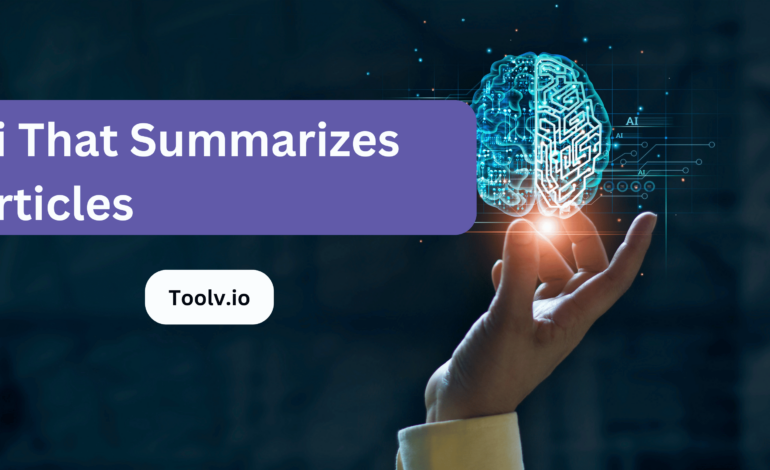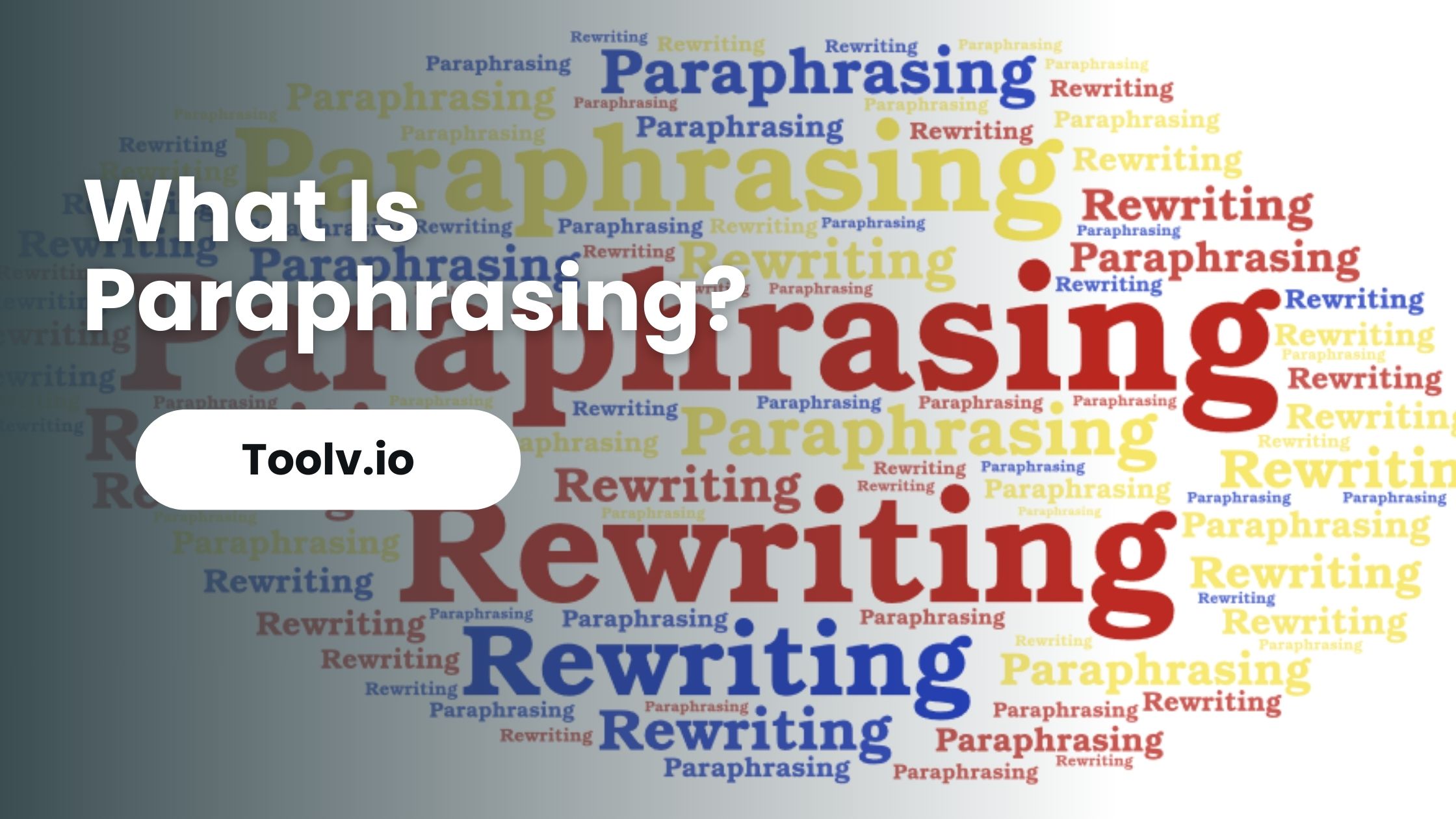Ai That Summarizes Articles

AI that summarizes articles uses technology to read through long texts and give you a shorter version. It picks out key points so you can understand the main ideas without reading everything. This is great for saving time and getting the gist of lots of information quickly.
In this article, we will discuss how this AI works, its benefits, and where it can be used. We’ll look at examples of AI summarization tools and how they’re changing the way we consume information.
What is an AI Article Summarizer?
An AI Article Summarizer is a tool that uses artificial intelligence technology to condense lengthy articles or texts into shorter, more concise summaries. It employs algorithms to analyze the content of the article, identifying key points, main ideas, and important information.
These summarizers are beneficial for individuals who need to quickly grasp the main points of an article without reading the entire text. They save time and effort by providing a condensed version of the content, making it easier to understand and digest.
Additionally, AI Article Summarizers can be useful for researchers, students, and professionals who need to process large volumes of information efficiently.
Key Benefits of Using an AI Article Summarizer
An AI article summarizer can save time and effort by quickly generating summaries of long, complex documents. This allows people to get the key information without having to read entire documents. Some of the major benefits include:
- Increased Productivity – Summarizers reduce reading time and allow people to absorb information faster. This helps boost overall productivity in work and learning.
- Better Comprehension – Summaries highlight the most salient points, making it easier to grasp key concepts, arguments, and conclusions. This leads to better overall comprehension.
- Accessibility – Summarizers make dense, complex information more accessible to more people, including those with reading challenges or limited time.
- Personalization – AI summarizers allow generating customized summaries focused on certain topics or questions of interest. This enables more personalized and relevant information access.
- Brevity – By condensing source content down to vital excerpts, summaries offer brevity, allowing information sharing in a more concise manner.
The ability to quickly grasp key information from long, complex documents makes AI summarizers a valuable productivity tool for work, learning, and personal applications. The above benefits explain why adoption of this technology continues to grow.
How AI Article Summarizers Work
AI article summarizers work by analyzing the content of a given article, identifying key information, and condensing it into a shorter, more concise version. These systems use advanced natural language processing (NLP) algorithms to understand the context and meaning of the text, allowing them to extract the most important points.
First, the AI identifies the main ideas, important facts, and key phrases within the article. Then, it generates a summary that captures the essence of the original text while omitting unnecessary details.
This process involves techniques such as sentence extraction, text compression, and semantic analysis to ensure the summary maintains coherence and accuracy.
By leveraging AI, article summarizers provide a quick and efficient way to grasp the main points of lengthy articles, saving time and effort for readers. They play a valuable role in various applications, including content curation, research, and information retrieval, facilitating easier access to relevant information in today’s vast digital landscape.
How to Use an AI Article Summarizer Effectively
Using an AI article summarizer effectively involves a few key steps. Firstly, input the entire article into the tool, ensuring it captures the main points accurately. Next, review the generated summary to ensure it captures the essence of the article while condensing it into a shorter form.
Pay attention to any important details that may have been omitted or misrepresented. Additionally, consider the context and purpose of the summary. Determine if it’s for personal use, research, or sharing with others. Adjust the summary as needed to meet these requirements.
Finally, evaluate the summary’s coherence and clarity to ensure it effectively communicates the main ideas of the article. By following these steps, you can make the most of an AI article summarizer to quickly grasp the key points of any text.
The Future of AI Article Summarization
In the fast-evolving landscape of artificial intelligence (AI), article summarization holds significant promise for enhancing information retrieval and comprehension. This technology sifts through large volumes of text to distill key points efficiently, aiding readers in grasping essential insights without the need to sift through lengthy documents.
These tools not only save time for readers but also benefit content creators by providing a concise overview of their articles, potentially increasing engagement and reach. As AI continues to improve, the future of article summarization looks bright, with applications ranging from academic research to content curation in digital publishing.
Embracing this technology can lead to more efficient information consumption and dissemination, shaping the future of how we interact with written content.
FAQs
What exactly is AI that summarizes articles?
AI that summarizes articles is a technology that uses artificial intelligence algorithms to condense lengthy articles or documents into shorter, more concise versions. It works by analyzing the content of the article, identifying key points, and generating a summary that captures the main ideas and important information.
How does AI summarization work?
Basically, AI summarization works by breaking down the text of an article into smaller chunks, analyzing the meaning and context of each chunk, and then selecting the most important information to include in the summary. This process often involves natural language processing (NLP) techniques, such as semantic analysis and text comprehension, to understand the content of the article and extract relevant information.
Is AI summarization accurate?
Well, it depends. AI summarization systems have come a long way in recent years and can produce pretty accurate summaries for many types of articles. However, they’re not perfect and may sometimes miss important details or misunderstand the meaning of certain sentences. Overall, though, they’re pretty good at giving you a quick overview of an article’s main points.
What are the benefits of using AI for article summarization?
Using AI for article summarization can save you a ton of time by quickly giving you the gist of a long article without having to read the whole thing. It’s also great for quickly scanning multiple articles to get a sense of what they’re about. Plus, it can help you stay informed about a wide range of topics without having to spend hours reading through lengthy articles
Conclusion
AI tools that summarize articles can greatly simplify how we digest information. They help us quickly understand key points from lengthy texts without needing to read everything. This saves time and makes learning easier for everyone.
One such tool, Toolv.io’s paraphrasing tool, is especially useful. It not only summarizes but also rephrases content in a simpler form. This makes even complex articles easy to understand. It’s a handy tool for anyone looking to get the gist of an article fast.





